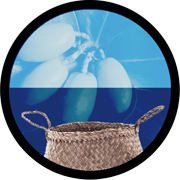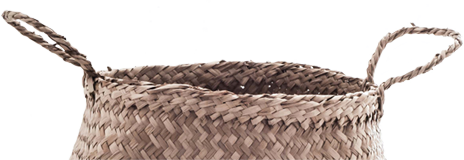-
For Whānau Manaaki Family Caregivers
- Kete Aronui Maori Palliative Care A site for whānau manaaki, family caregivers
- Te Ipu Aronui Road Map
- Kete Tuauri
- Spirituality and wairua
- Karakia definition
- Diverse spiritual faiths and practices
- Spiritual safety and protection
- Spiritual care within hospitals, hospices and aged residential care services
- The power of karakia
- Spiritual support at time of death
- What if you do not know your spiritual care customs?
- Kete Aronui - rongoā
- Rongoā healing
- Forms of rongoā
- Use of rongoā rākau (natural plant medicines) is increasing
- Are you thinking about using rongoā?
- Include your rongoā healer in your health care team
- Self-care
- Te Ipu Aronui’s Kete Tuauri
- Staying with the tūpāpaku
- Karakia before and after death
- Preparing the tūpāpaku (body)
- Caring for the tūpāpaku (body) after death
- Planning and preparation for care following death
- Whakanoa (spiritual clearing of environment process)
-
For Health Professionals
- Whanaungatanga - Establishing a relationship
- Connections take time
- First contact - building a rapport
- Rich histories and lifestyles
- Building trusting relationships
- Whānau systems of care Care roles within whānau
- Geographical location and end of life care
- Challenges whānau face
- Cultural safety - more effective than cultural competency
- Cultural safety - a definition
- Māori health and palliative care workforce
- Strengthening Māori cultural safety
- Caring for Māori health professionals
- Tikanga
- Ngākau pono Working with a sincere heart
- Caring with aroha
- Self-care
- Te Reo Māori The Māori language
- New Zealand history
- Kaumātua tino rangatiratanga Independence, authority
- Places kaumātua are cared for
- Dying in a healthcare setting
- Living in a ‘home’
-
Pae Herenga Research Background
- Healthcare providers
- Palliative care resources
- Support services
- Grief and loss support
- Research
- Tangihanga and funerals
- Links and Information for Health Professionals
- Te Reo Māori Resources
- Cultural Safety
- New Zealand History
- Pūrākau
- Advanced Care Planning (ACP)
- Medicines Directory
- Publications
- Māori Data Sovereignty
- Covid 19 Study
Why is this kete called Kete Tuatea?

"Kete Tuatea
contained knowledge about restricted spiritual information and practices that could be harmful to humankind."
In the Māori creation pūrākau (story), Tāne’s quest was to ascend to the heavenly realms to retrieve three kete (baskets) of knowledge to help humankind. Tāne was one of Papatūānuku (Earth Mother’s), and Ranginui (Sky Father’s) many children. Tāne was able to successfully separate his parents from being locked in a tight embrace, ending the eternal darkness he and his siblings endured, and allowing te ao mārama, the light of day to emerge… this was the beginning of life flourishing as we know it. During his many pursuits Tāne took on many challenges to help humankind, including his quest to travel to the 12 heavenly realms to retrieve three baskets of knowledge that were necessary for the safety, care and protection of humankind.
The kete, ‘Kete Tuatea’ contained knowledge about restricted spiritual information and practices that could be harmful to humankind. Today we can relate this basket of knowledge to the connection’s health and social care professionals and volunteers have with each other, and with those they care for, including kaumātua and whānau manaaki. This knowledge kete is mindful of, and pays attention to, the past, our spiritual realities, the importance of space and time, and tikanga (customs), as well as kawa (ceremonial rituals). In essence, Kete Tuatea contains information to guide and support health professionals to protect kaumātua and whānau from harm by increasing their sense of cultural safety and well-being when accessing, and using, health and palliative care services and social care services.
Pūrākau Resource
If you are interested in reading more about the Māori creation pūrākau, or other Māori pūrākau, there are many published versions available in bookstores, public libraries and online. Here are some that you may wish to look up:
Grace, P. (1984). Wāhine toa: Women of Maori myth. Williams Collins Publishers Ltd.
Ihimaera, W. & Hereaka, W. (Eds.). (2019). Pūrākau: Māori myths retold by Māori writers. Penguin Random House New Zealand. https://books.google.com.au/books/about/Purakau.html?id=Q_GcDwAAQBAJ&printsec=frontcover&source=kp_read_button&redir_esc=y#v=onepage&q&f=false
Reed, A.W. (2013). Favourite Māori legends (Rev. ed.). Oratia Media.
Who is Kete Tuatea for?
This page is dedicated to health and palliative care services and professionals, the allied health workforces and volunteers who provide different aspects of care to kaumātua and whānau at end of life. If you are a health care assistant, nurse, volunteer, doctor, manager, radiographer, spiritual care worker, mental health clinician, pharmacist or a hospice volunteer shifter lifter (person who brings equipment into the home and removes it), or anyone who comes into contact with kaumātua (older Māori) and whānau manaaki (family carers) in the course of your formal or voluntary employment, then Kete Tuatea has been created to help you to support them.
We cannot assume that all Māori are equipped with Indigenous cultural knowledge - just because someone has Māori whakapapa (genealogy) this does not mean they are automatically tohunga (experts) of Māori tikanga (customs) and kawa (ceremonies). We never stop learning and growing; the information on Te Ipu Aronui – Kete Tuatea has been developed to support your professional development whether you are non-Māori or whether you are a Māori individual who is embracing their culture.
What Kete Tuatea offers
"Kete Tuatea provides practical information and recommendations to help health and palliative care services and professionals to be equity driven."
Kete Tuatea provides practical information and recommendations to help health and palliative care services and professionals to be equity driven (ensuring their cultural competencies are at the highest level to enable kaumātua and their whānau manaaki to experience the highest level of cultural safety possible). We aim to signal to health providers what education, training, resources, skills and Māori community collaborations are needed to support the cultural values, practices and protocols of kaumātua, whānau manaaki, hapū (kinship group) and iwi (extended kinship group).
We introduce you to Māori values, key cultural concepts and some important terms that guide whānau manaaki in their caregiving practice. Examples of good practices identified by our participants as being helpful to whānau manaaki have been provided as exemplars from which to learn from. Whānau manaaki experiences shared on Te Ipu Aronui are our ‘gold standard’ of best practice.
You will also be able to access and view over 20 videos (digital stories) that highlight aspects of caring for kaumātua. Most are from the carer’s perspective and can be used to gain a valuable insight into what matters for kaumātua and their whānau at end of life. Some are from the perspective of Māori health professionals working in palliative care, and provide valuable information on how health professionals can support whānau at end of life. There is also a short documentary on kaumātua veterans’ stories about ageing and well-being.
